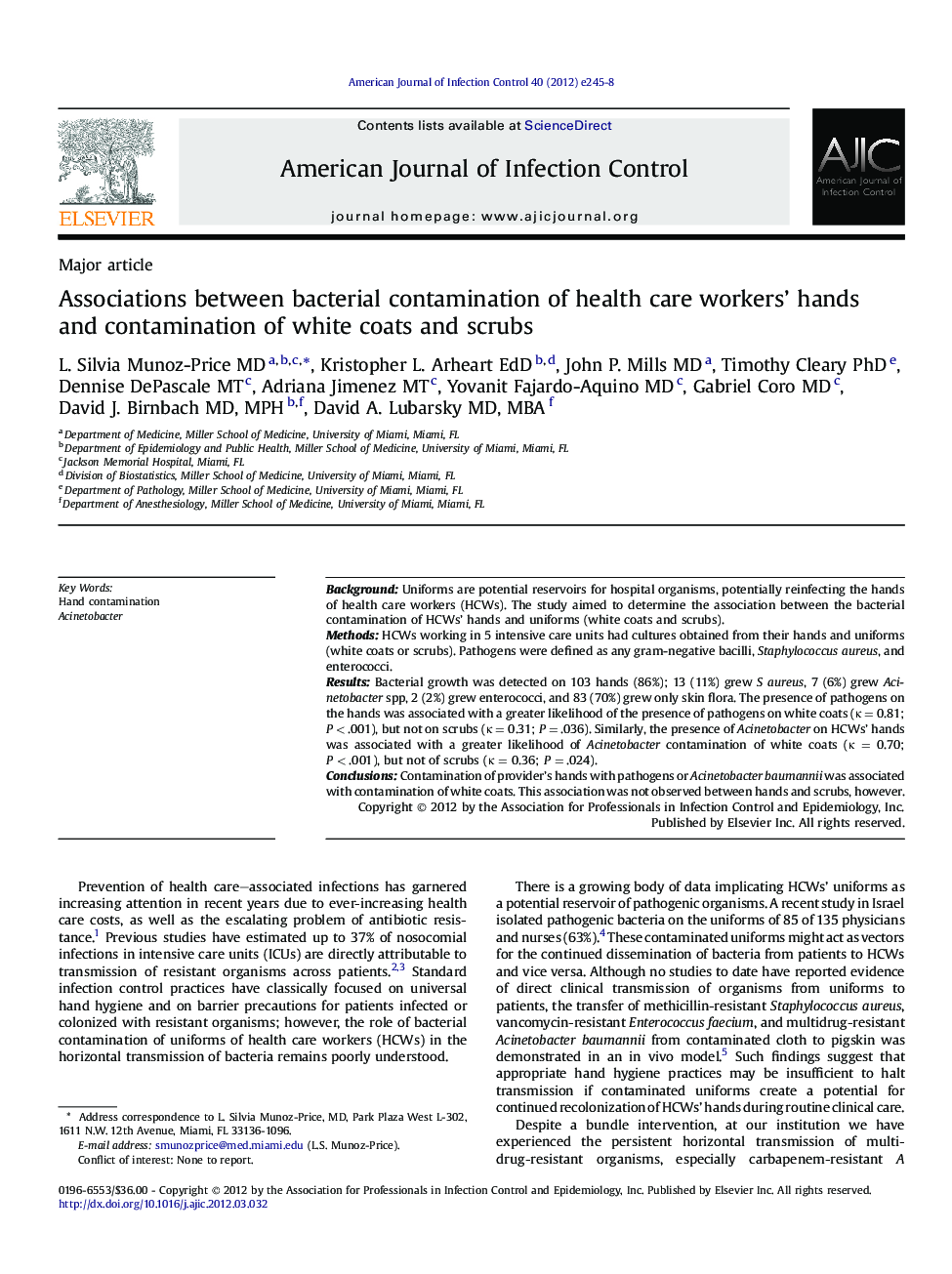| Article ID | Journal | Published Year | Pages | File Type |
|---|---|---|---|---|
| 2640168 | American Journal of Infection Control | 2012 | 4 Pages |
BackgroundUniforms are potential reservoirs for hospital organisms, potentially reinfecting the hands of health care workers (HCWs). The study aimed to determine the association between the bacterial contamination of HCWs' hands and uniforms (white coats and scrubs).MethodsHCWs working in 5 intensive care units had cultures obtained from their hands and uniforms (white coats or scrubs). Pathogens were defined as any gram-negative bacilli, Staphylococcus aureus, and enterococci.ResultsBacterial growth was detected on 103 hands (86%); 13 (11%) grew S aureus, 7 (6%) grew Acinetobacter spp, 2 (2%) grew enterococci, and 83 (70%) grew only skin flora. The presence of pathogens on the hands was associated with a greater likelihood of the presence of pathogens on white coats (κ = 0.81; P < .001), but not on scrubs (κ = 0.31; P = .036). Similarly, the presence of Acinetobacter on HCWs' hands was associated with a greater likelihood of Acinetobacter contamination of white coats (κ = 0.70; P < .001), but not of scrubs (κ = 0.36; P = .024).ConclusionsContamination of provider's hands with pathogens or Acinetobacter baumannii was associated with contamination of white coats. This association was not observed between hands and scrubs, however.
